Paspalum Disease Identifications & Management
Dr. Alfredo D. Martinez-Espinoza
Professor of Plant Pathology
University of Georgia, Griffin Campus
Griffin GA, USA
Photos by: A. Martinez
Seashore paspalum turfgrass swards will grow at the top of their genetic potential as long as nutrients, moisture, light and favorable temperatures are provided. Diseases on these turfgrass species are the exception and not the rule. However, turfgrass stands can be injured and damaged by biotic (living) and abiotic (non-living) agents. Pathogenic diseases can be caused by differ classes of pathogens such as fungi, bacteria, viruses, phytoplasma, mollicutes, and nematodes. In order to have a pathogenic disease, three factors must always be present: (1) a susceptible host, (2) a parasitic organism, (3) environmental conditions that are favorable to the pathogen. If a susceptible host and organism are present,
Proper disease diagnosis and management require a thorough examination of the site, knowledge of relevant past and present environmental conditions, in-depth knowledge of plant species biology, site management history, pathogen life cycles and epidemiology, and an orderly series of tests to determine possible causes.
The most important turfgrass diseases of Seashore paspalum include:
FOLIAR DISEASES
Dollar Spot
Causal agent: Sclerotinia
Conditions promoting disease: This is one of the more prevalent and damaging
Symptoms: Circular straw-colored infection centers only a few inches across, although spots may merge and resemble brown patch. Live blades may have straw-colored lesions along one edge. Lesion moves across
Control: Fertilize as necessary; water adequately. Use an adequate level of nitrogen, particularly in the spring and early summer. Mow grass at regular intervals. Irrigate turf early in the day to allow the foliage to dry as quickly as possible. Reduce thatch. Increase
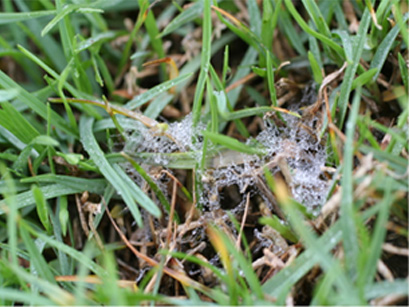
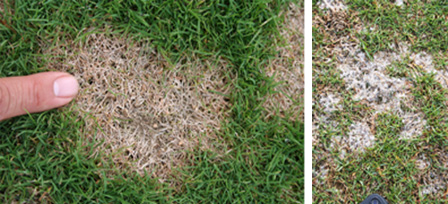
Leaf Spot
Causal agent: Drechslera spp, Bipolaris spp (formerly Helminthosporium spp)
Conditions promoting disease: Low potassium, extended leaf wetness and/or nitrogen levels in
Symptoms: Small, dark spots or streaks on grass blades and sheaths. Leaf spots more numerous near collar area of
Control: Have

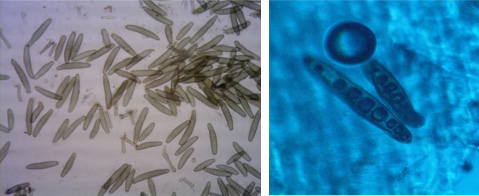
MELTING/FADING OUT
Causal agent: Curvularia spp.
Conditions promoting disease: The environmental conditions that trigger fading/melting out are similar to leaf spot. Mixed infections of Curvularia, Helminthosporium
Symptoms: Indefinite yellow/green dappled pattern extending down from leaf tip. Affected area turns brown, gray and then dies.
Control: Have
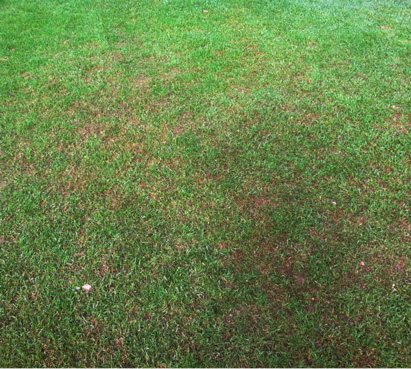
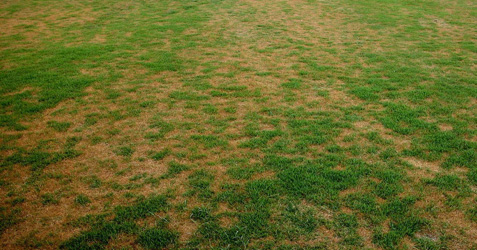
ROOT & CROWN DISEASES
large patch
Causal agent: Rhizoctonia
Conditions promoting disease: Large patch is one of the most important, prevalent and damaging diseases of Seashore paspalum. The disease is prevalent in the Spring and Fall when temperatures range between 73-90 degrees F and night temperatures drop below 68 degrees F. Fungus generally stops at 90 degrees F. The most favorable conditions for disease development usually occur from late April through October. Large patch is favored by high relative humidity during the day and a minimum temperature of 65 degrees F at night. Excess soil moisture, extended leaf wetness, and/or high levels of nitrogen increase severity of the disease.
Symptoms: Leaf blades or sheaths are blighted in circular patches measuring inches to feet across. In paspalum, patches are yellow to brown. Patches appear straw-colored. Leaves pull loose very easily since the pathogen destroys the tissue of at the base of the leaf sheath. Starts as small circular patches of water-soaked shoots that wilt and turn light brown. Stolons remain green. New green leaves may emerge in the center of the diseased area.
Control: Correct water problems; don’t over-fertilize. Use low amounts of nitrogen, moderate amounts of phosphorous and moderate to high amounts of potash. Avoid nitrogen application when the disease is active. Increase the height of cut and increase the air circulation. Minimize the amount of shade. Irrigate turf early in the day to allow the foliage to dry as quickly as possible. Improve the drainage of the turf. Reduce thatch. Remove dew from turf early in the day. A large number of fungicides are available for large patch control in Seashore paspalum. Due to constant changes in fungicide labeling, check the entire product label, visit www.georgiaturf.com and/or contact your local county Extension agent for the most up-to-date information.
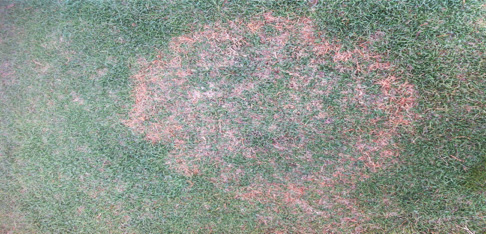
Bermudagrass decline/Take-All root rot
Causal agent: Gaeumannomyces
Conditions promoting disease: Bermudagrass decline typically occurs in wet conditions and in areas with soil pH at pH 6.5 or above. This disease is more severe on less fertile and sandy soils.
Symptoms: Take-all root rot causes wilted circular patches that are brown or bronze-colored and measure up to several feet in diameter. Infected plants have dark-brown roots.
Control: Use acidifying fertilizers. Apply moderate to high levels of phosphorous, potash and minor elements where these nutrients are depleted from the soil. Avoid the use of lime. Improve the drainage of the turf. Reduce thatch. A variety of fungicides are available to Helminthosporium leaf spot in Seashore paspalum. Due to constant changes in fungicide labeling, check the entire product label, visit www.georgiaturf.com and/or contact your local county Extension agent for the most up-to-date information.
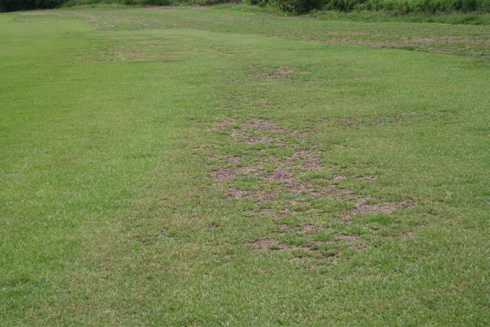
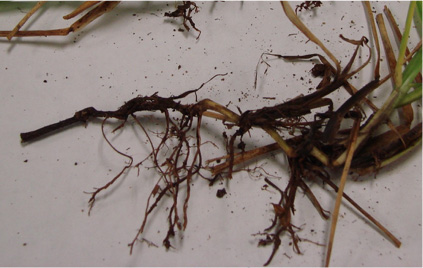
Pythium
Causal agent: Pythium spp
Conditions promoting disease: Excessive soil moisture caused by
Symptoms: Small, irregular spots may enlarge and appear dark and water-soaked in early stages. White, cottony mycelia may be evident. Turfgrass in affected spots dies rapidly, collapses, and appears oily and matted. Webbing may be evident early in the morning in some turfgrass species.
Control: Correct over-watering and/or drainage problems. Apply optimum amounts of nitrogen, phosphorous and potassium. Reduce mowing frequency and use lightweight mowers. Apply low amounts of nitrogen in the spring when roots are forming. Minimize the amount of shade. Improve the drainage of the turf. Reduce soil compaction through aeration by using lightweight equipment. Recommended fungicides can help prevent further infection while corrective cultural measures are taken. Note that correct diagnosis is important because Pythium control requires specific fungicides. Due to constant changes in fungicide labeling, check the entire product label, visit www.georgiaturf.com and/or contact your local county Extension agent for the most up-to-date information.
Nematodes
Causal agent: Various Species
Conditions promoting problem: No specific conditions; damage more noticeable during hot, dry periods.
Symptoms: Nematodes attack the root system, so above-ground symptoms may include
Control: Have a soil test done, send root zone soil sample to a Nematology lab to quantify and identify the nematode species. Negative nematode effects will only occur if soil population numbers exceed estimated damage thresholds levels. Fertilize if necessary and water appropriately to keep grass as vigorous as possible. Nematicides are available for golf courses on a limited basis.
FOR TURFGRASS DISEASE IDENTIFICATION AND CONTROL, ABIOTIC DISEASES AND INJURIES AND CHEMICAL CONTROL VISIT:
Turfgrass Diseases in GA: Identification & Control
A to Z list of plant diseases
Abiotic Injuries and Disorders of Turfgrasses in Georgia
Turf Disease Control
http://www.georgiaturf.com
